
SURRENDER TO THE DREAMERS
“Surrender to the Dreamers” presents recent artistic perspectives on surrealism and photography, thus engaging in dialogue with the exhibition “FOTOGAGA. Max Ernst and Photography. A visit from the Würth Collection”, currently on view at the Museum für Fotografie until April 27, 2025. “Surrender to the Dreamers” is organized and curated by analogueNOW, a Berlin-based non-profit association bringing together artists, photographers, curators, educators and photo-enthusiasts in order to promote analog photography.
« Surrender to the Dreamers » explores photography as a medium able to transcend the limits of the visible and venture beyond mere sensory perception. In both exhibitions, artists utilize photography to unveil the hidden and conjure previously unseen, unfamiliar visions.
Through hands-on manipulation and experimentation, the featured artists excavate family secrets, shed light on forgotten women, and reconstruct missing archives, among other pursuits. By materializing shadows and actualizing dreams, the works in the exhibition go far beyond mere escapism. They engage with and challenge dominant representations of reality.
By means of imagination, fiction, and reconstruction, the artists demonstrate how photography can be employed to reveal new ways of seeing and narrating personal, familial, and collective histories. Rather than a result, the photographic image becomes a raw material, altered and reshaped to address absences and fill gaps.
An exhibition in cooperation with the Kunstbibliothek – Staatliche Museen zu Berlin, with the support of analogueNOW. Part of the European Month of Photography 2025.
With works by
Michael Borowski • Anaïs Boudot • Timotheus Büttner • Cai Dongdong • Ioanna Sakellaraki • Ria Wank
Co-curated with Thomas Ming-Hui Stanka


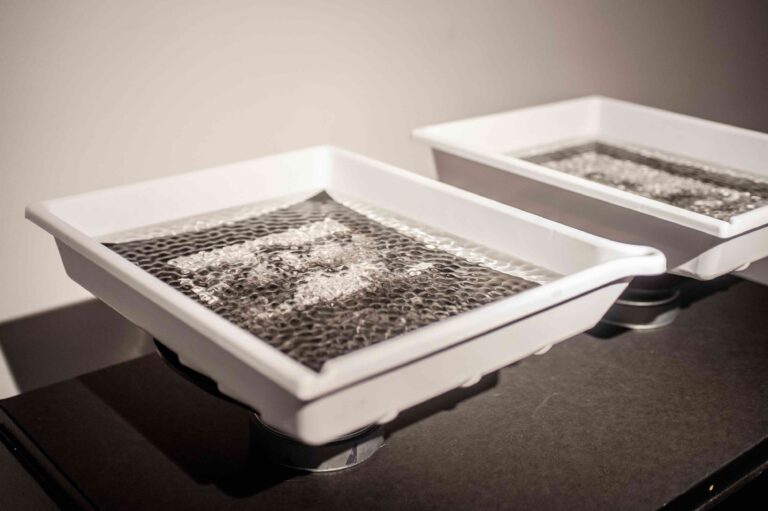

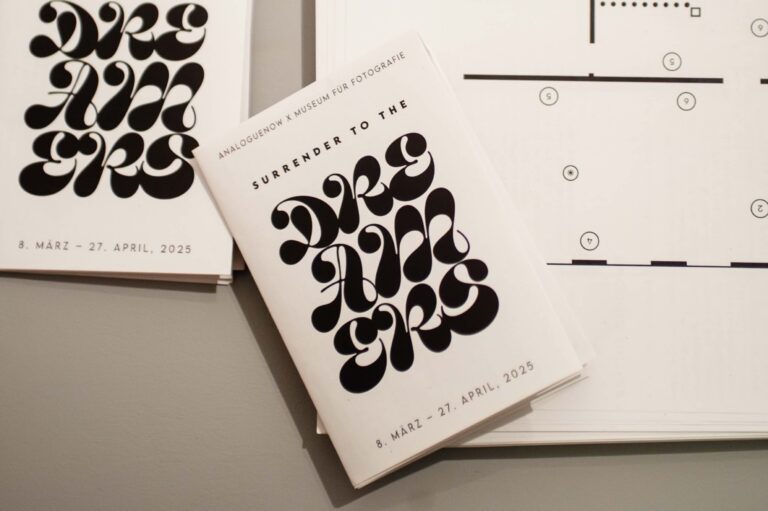
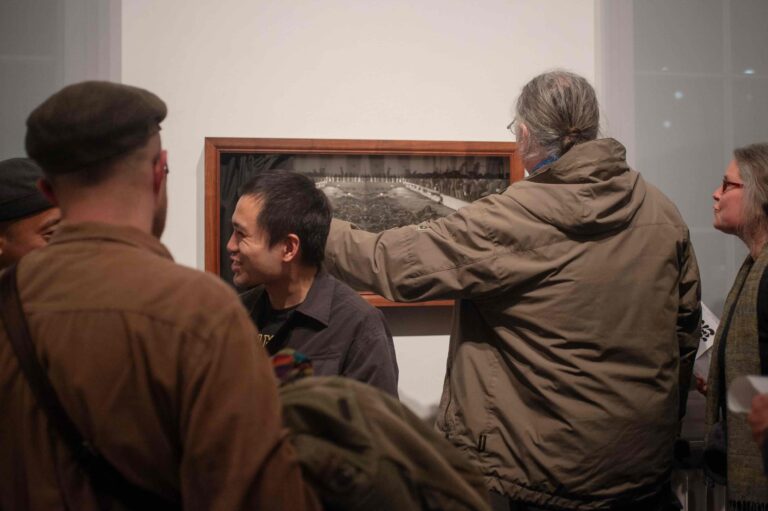
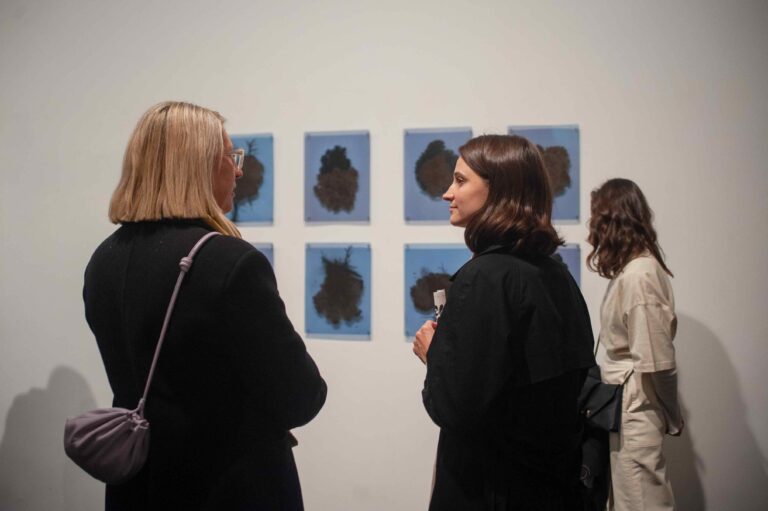


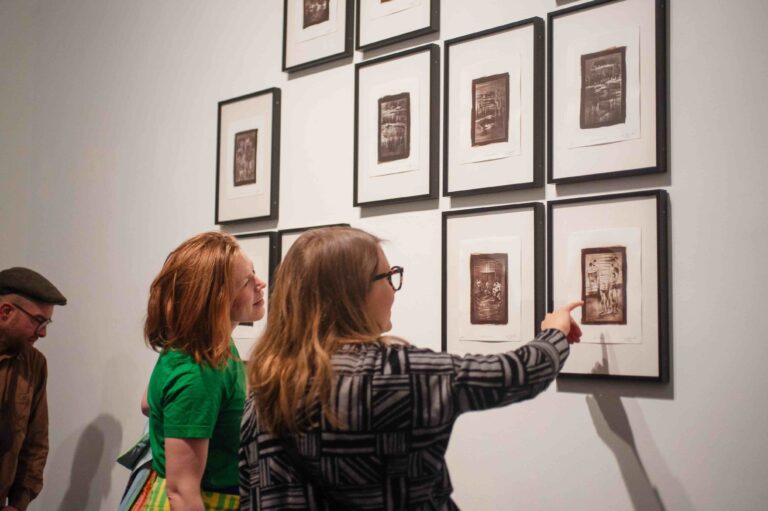
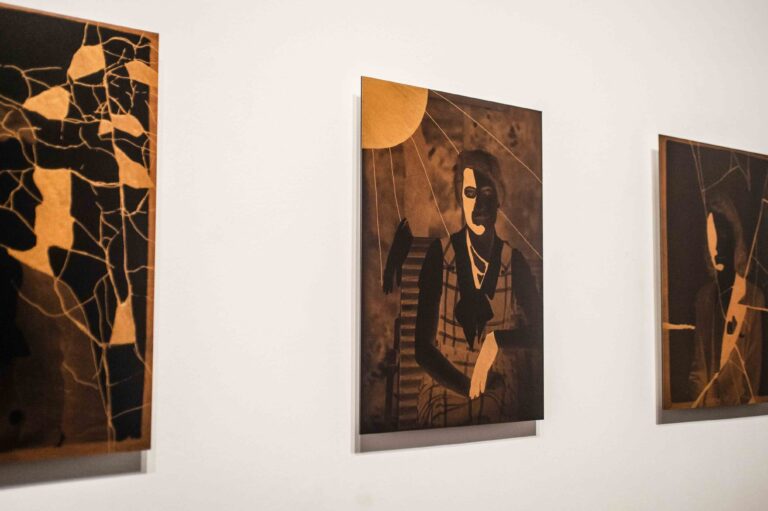

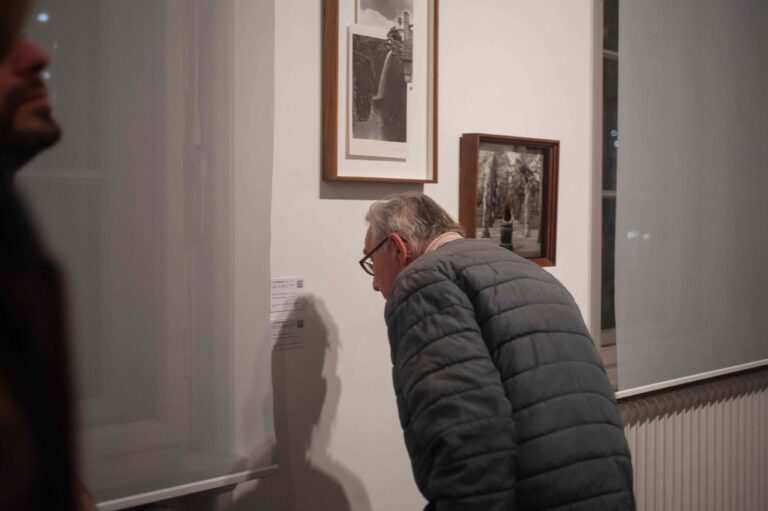
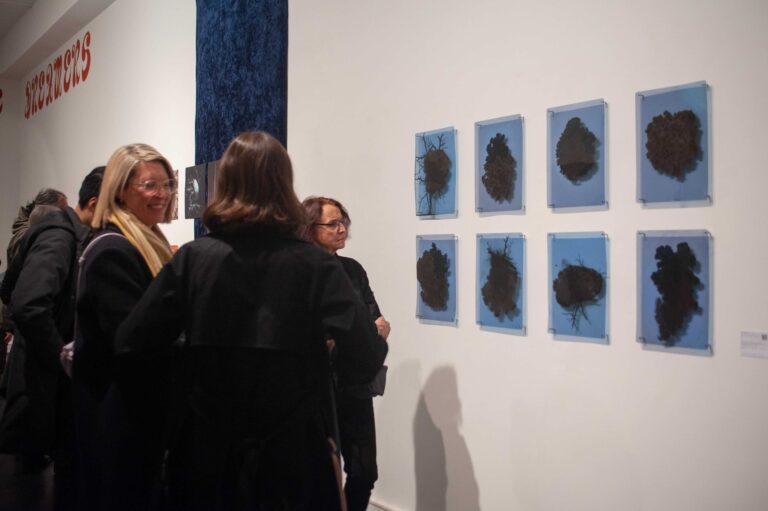
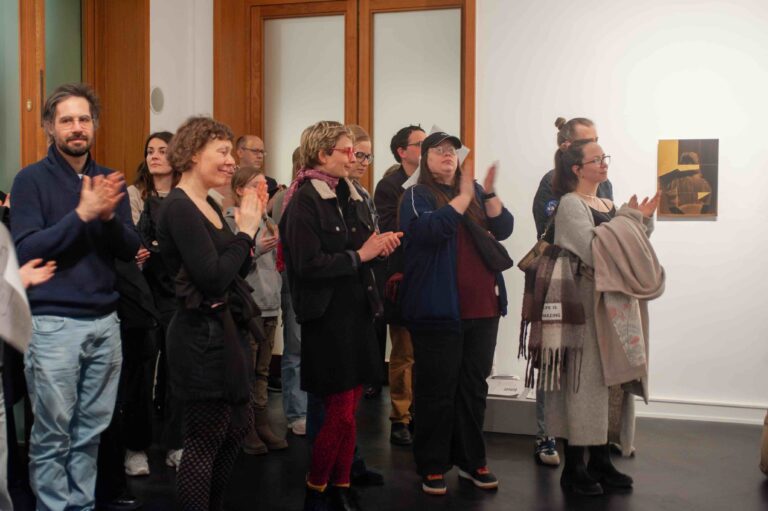
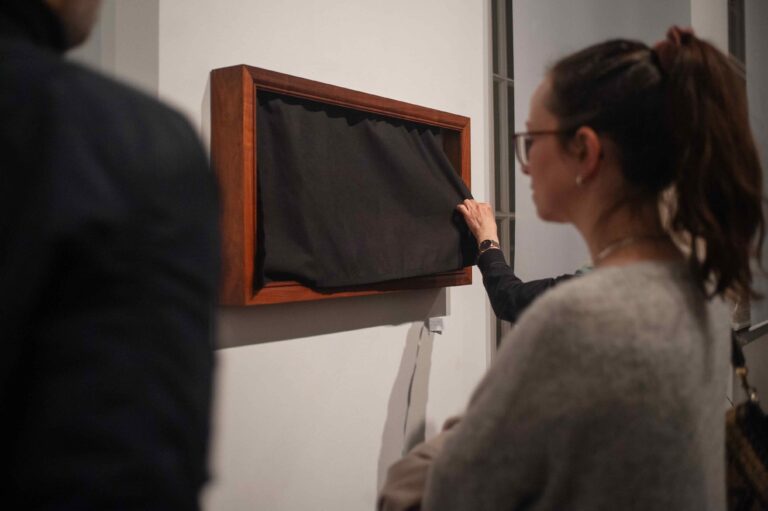

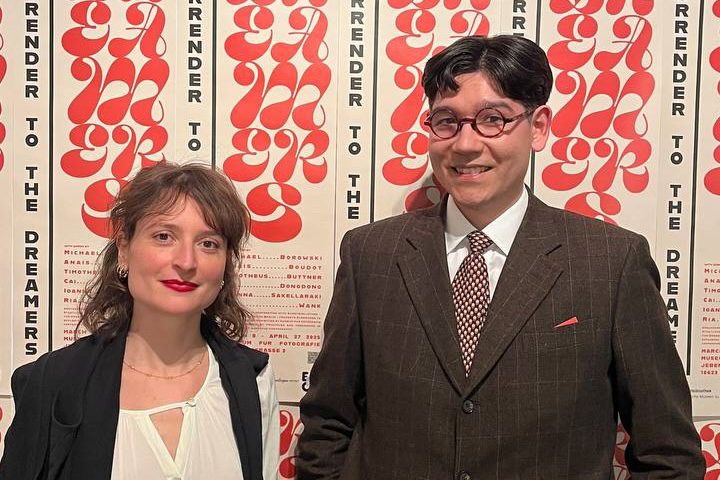
Photos of the opening: © Emma Fiacchini – Portrait: © Michael Borowski
about

Michael Borowski
b. 1981, lives and works in Blacksburg, Virginia, US
In “The Wooden Beaver Archive” (2022), Michael Borowski creates a parafictional archive for the undocumented history of mineral springs as sites of queer desire. Borowski generates images through AI, which he then prints using the salt print process, a prevalent photographic process during the mid-19th century, when mineral spring sites were at the height of their popularity. The process renders bodies and structures as hazy, ambiguous mashups. Here, representational logic falls apart as soon as the viewer starts looking closer at them, thus inviting reflection on the very notion of archive.
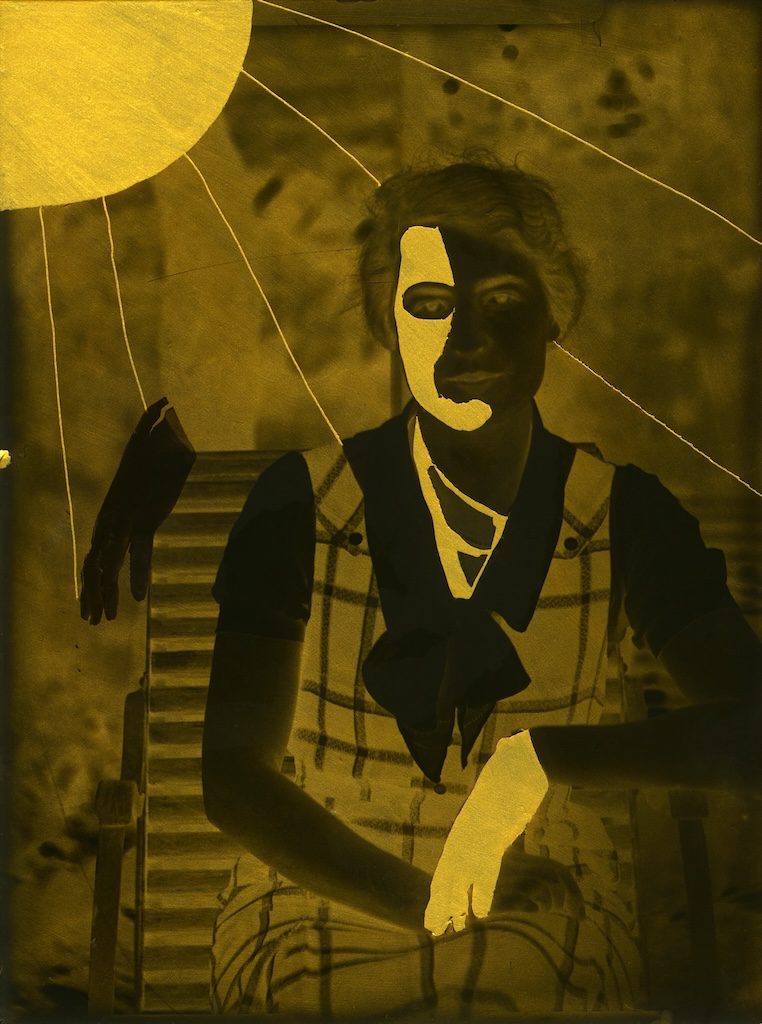
Anaïs Boudot
b. 1984, lives and works in Henrichemont, FR
In her series “Les Oubliées” [The Forgotten Ones], Anaïs Boudot breathes new life into found glass plate negatives of anonymous women’s portraits. By scratching, peeling, fragmenting, and reconstructing the surface, she gives substance to new images, which she then enhances with gold paint. Describing this process as an “act of repair,” Boudot addresses the invisibility of muses and models in art history—figures who were often (forgotten) artists themselves. Shedding light on women confined to the shadows, her experimental techniques and surgical gestures create unexpected remembrances, allowing “feelings and personal sensations [to] take shape within the images.”

Timotheus Büttner
b. 1987, lives and works in Marburg, DE
By combining photography and sound installation into a durational happening, photography is fluid retroverts the traditional perception of the photographic image as a still, lasting record of reality. Contact prints are immersed in development trays filled with water and placed on speakers, where the voices of the models set the water’s surface into motion. As the exhibition unfolds, a reversal occurs: the images gradually dissolve, thus evoking the fleeting nature of life and the deceptive strategies through which we attempt to preserve its traces.
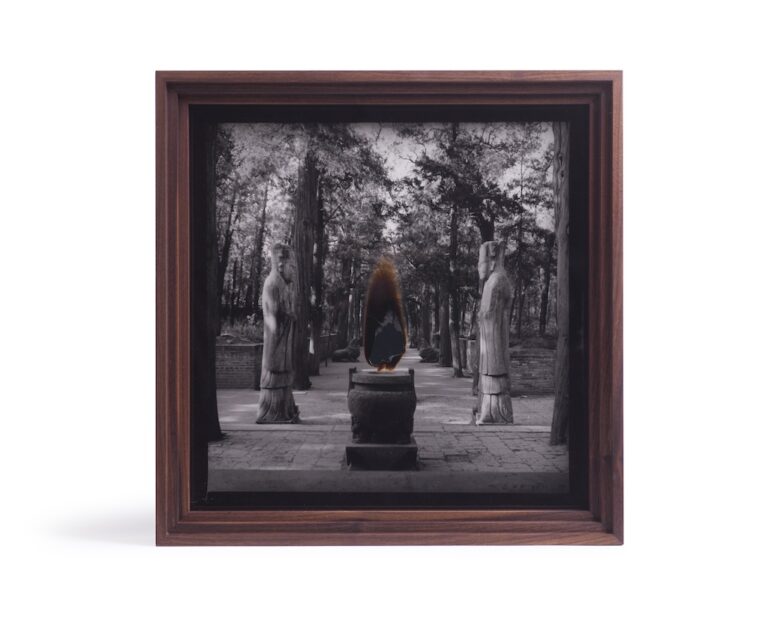
Cai Dongdong
b. 1978, lives and works between Beijing, CN and Berlin, DE
Working with archival material, Cai Dongdong recontextualizes and transforms anonymous images to explore Chinese history and visual culture. His process questions the dual nature of photography—as both an indexical record (a “fragment of reality”) and an abstract, interpretative medium. Through a certain theatricality, he reimagines photographs, creating hybrid artifacts that exist between images and objects, reflecting on historical memory, narrative construction, and the restaging of reality. By altering the surface of photographic images, he underscores their fragmentary nature, revealing how they can obscure as much as they reveal.

Ioanna Sakellaraki
b. 1989, lives and works between Athens, GR and Melbourne, AU
The featured works are part of the artist’s ongoing trilogy project, in which she excavates and gradually reconciles with her father’s secret past. By combining her father’s photographic archives with her own images in multilayered, collage-like compositions—hand-stitched with pearls—Sakellaraki creates a body of work that reflects on family mythologies and personal odysseys. Like a sedimented narrative, the ensemble takes the form of a dreamlike archaeological endeavor, weaving through the meanders of personal trajectories, where fragmented memories are mended together in a process of understanding and reconciliation.
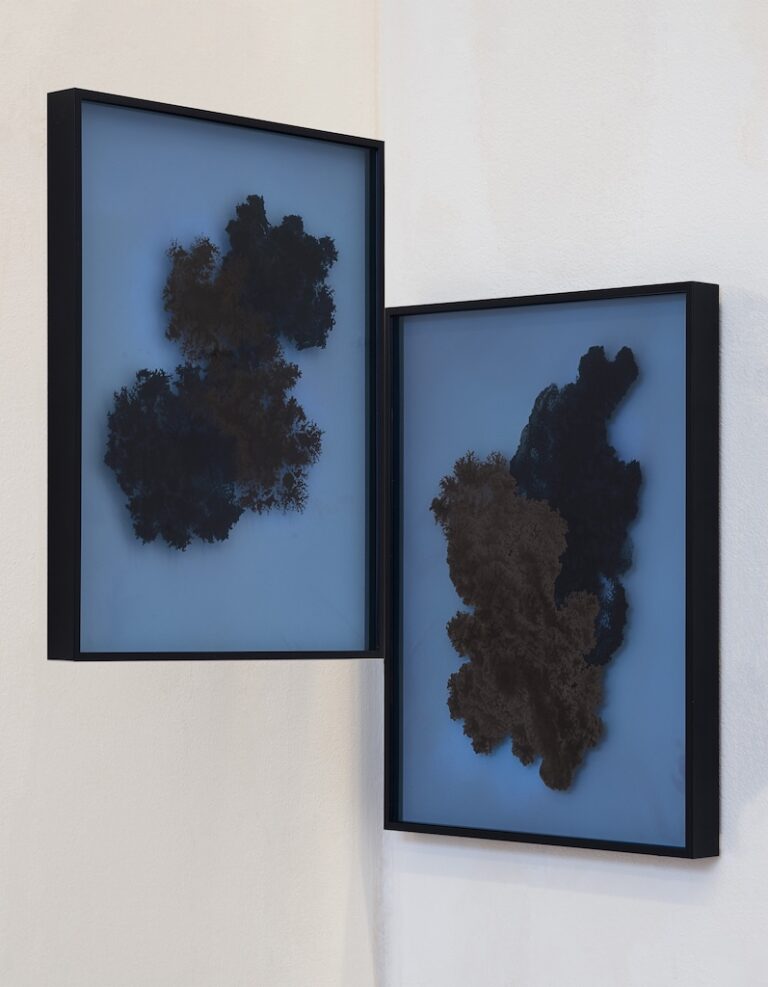
Ria Wank
b. 1988, lives and works in Berlin, DE
In in between, Ria Wank—whose practice is rooted in slow, process-based work—explores the liminal space between wakefulness and sleep. Through chemigrams, she captures the physiological perceptions and fragmented visions characteristic of this transitional state. Both the process and the resulting pieces evoke a dreamlike yet visceral exploration of deeper layers of consciousness. Liminal visions also shape pyroclastic X-rays, in which Wank creates camera-less images on a medium traditionally used for medical observation to reveal realities invisible to the eye. By repurposing this material, the work explores the intersection of photography’s functional and expressive dimensions.